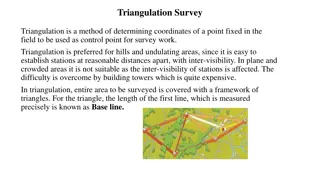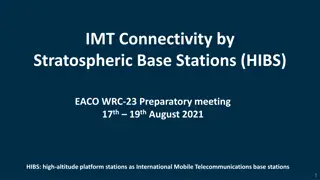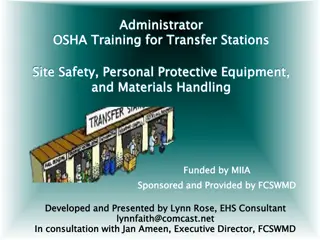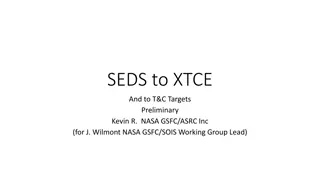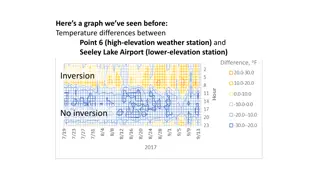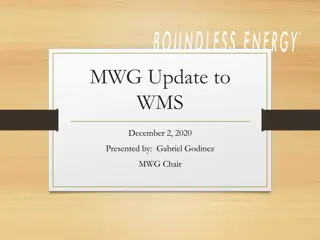Ground Control Stations (GCS) and Telemetry Data
This content delves into the functionality of Ground Control Stations (GCS), their role in communicating with Unmanned Aerial Vehicles (UAVs), sending commands, receiving telemetry data, and managing mission parameters. It also highlights the importance of telemetry data in providing information about the UAV's state, including speed, position, altitude, and system errors.
Download Presentation

Please find below an Image/Link to download the presentation.
The content on the website is provided AS IS for your information and personal use only. It may not be sold, licensed, or shared on other websites without obtaining consent from the author.If you encounter any issues during the download, it is possible that the publisher has removed the file from their server.
You are allowed to download the files provided on this website for personal or commercial use, subject to the condition that they are used lawfully. All files are the property of their respective owners.
The content on the website is provided AS IS for your information and personal use only. It may not be sold, licensed, or shared on other websites without obtaining consent from the author.
E N D
Presentation Transcript
Also known as GCS Communicate with the UAV Receive telemetry data Send commands to UAV
Telemetry Data Data sent from UAV to GCS Contains information about the current state of the UAV Speed Position Altitude System errors
Command data Data sent from GCS to UAV Can be Flight commands (RTL, Goto waypoint) Get/set flight parameters Get/set mission waypoints
A GCS Consists of Communications Link GCS Computer GCS Software Other accessories - live video feed, tracking antenna, DGPS base station, etc as required
Most GCS software is run on laptops Different options depending on Which flight controller is used GCS Operating System Require features Open source and commercial offerings
Software Software Runs on Linux Runs on Linux Runs Windows YY Y YY Y YY Runs on Windows on Runs on OSX Runs on OSX Mission Planner MAVProxy APM Planner 2 Qground control UgCS Y YY YY Y YY YY YY YY
Software Software Runs on Android YY Runs on Android Runs Runs on iOS on iOS Tower MAVPilot SidePilot AndroPilot YY YY YY
Compatibility and features vary widely between GCS programs
Micro Air Vehicle Link Standardised protocol for most open-source flight controllers Though some flight controllers may have extra MAVLink messages Efficient and low datarate Includes CRC to ensure validity of data 3 versions - 0.9, 1.0, 2.0 Arduplane can use 1.0 or 2.0 (default 1.0)
Byte Index 0 1 Byte Index 0 1 Content Packet start sign Payload length Content Value v1.0: 0xFE (v0.9: 0x55) 0 - 255 Value Explanation Indicates the start of a new packet. Indicates length of the following payload. Each component counts up his send sequence. Allows to detect packet loss ID of the SENDING system. ID of the SENDING component. ID of the message - the id defines what the payload means and how it should be correctly decoded. Data of the message, depends on the message id. Explanation 2 3 4 2 3 4 Packet sequence System ID Component ID 0 - 255 1 - 255 0 - 255 5 5 Message ID 0 - 255 6 to (n+6) 6 to (n+6) Data Checksum (low byte, high byte) (0 - 255) bytes ITU X.25/SAE AS-4 hash, excluding packet start sign, so bytes 1..(n+6) (n+7) to (n+8) (n+7) to (n+8)
There are MAVLink messages for sending/receiving parameters and missions Typically, a flight controller may only send some of the messages - depending on it s features, settings and current state
MAVLink does include any encryption Up to the user to implement in their communications link MAVLink 2.0 includes a signing key 32-bit number Flight controller will only accept commands from packet signed with this key Disabled by default
What is the mission objective? Primary and secondary goals Payload required UAV required Most GCS software packages have a mission planning screen where you can drag-n-drop waypoints
Considerations Takeoff/landing area Hills/Terrain Flight altitude Mission length (km) Weather (wind) Communications coverage
If possible, run the mission in SITL beforehand, to ensure the waypoints are correctly laid out Some GCS software packages have auto- generation of waypoints for mowing-the- lawn surveys
Create a mission that: Perform an aerial survey of the Snowy Hydro base Considerations: Takeoff/landing at CMAC Landing will be manual Create the mission, run in SITL cd ./ArduPlane ../Tools/autotest/sim_vehicle.py Two options for GCS tool to use for mission planning (choose one) Connect Mission Planner via UDP, port 14550 Use module load misseditor in MAVProxy
Geofences A single closed polygon UAV will turn back if it crosses outside of the polygon Note that the UAV s inertia may send it beyond the fence for a short period
Rally points Instead of a single Home point, have a set of rally points On RTL, the UAV will head to the nearest rally point
Terrain Following Terrain data stored on Pixhawk s SD card Arduplane will look at this database to estimate it s AGL Available in AUTO, RTL and other flight modes. Will maintain a constant height above ground Set TERRAIN_ENABLE to 1 and TERRAIN_FOLLOW to 1 Note the datasource is the SRTM data, so is only accurate to 20m
Two types of logfiles GCS - saved copy of MAVlink stream (tlog) APM - saved on SD card (bin) Bin log has more messages at a faster rate Generally the preferred log when analysing a flight Tlog is on the GCS, so can be used if the UAV goes missing or is destroyed Still worth searching the crash site for the SD card!
Tlogs are stored in: Mission Planner C:\Program Files (x86)\Mission Planner\logs MAVProxy Same folder that MAVproxy was run from (unless using the --aircraft option)
Most flight analysis tools will work with both bin files and tlog files Popular Flight Analysis tools: Mission Planner MAVExplorer (part of MAVProxy)
Mechanical Failures These appear in the log as a sudden divergence in the desired roll and pitch vs the vehicles actual roll and pitch
Compass Interference Look for patterns between mag_field and throttle
Power brown-outs, if APM voltage varies by more than 0.15V, or goes below 4.7V
Logfile Analysis Find a logfile generated by SITL(./ArduPlane/logs) for the bin file For more interesting data: http://discuss.ardupilot.org/t/altitude-hold-and- stability/14536 Two options for Analysis tool (choose one) Mission Planner MAVExplorer Check GPS GPS.Nsats and GPS.HDop messages Check Vibration IMU.AccX, IMU.AccY, IMU.AccZ messages
APM outputs a lot of telemetry data How to watch all this in realtime?
Decide which data is important May vary depending on mission phase Speed, Altitude during takeoff and landing Moving map during mission
Things to typically monitor Speed Altitude UAV Position (longitude/latitude) along with waypoints Battery voltage Telemetry link quality Any error messages Anything that, if not detected in a short time, could result in a crash
Have backup plans for common failure scenarios Practice! In SITL In test flights Consider having multiple GCS stations to split the workload
Flight Planning Logfile analysis Inflight monitoring
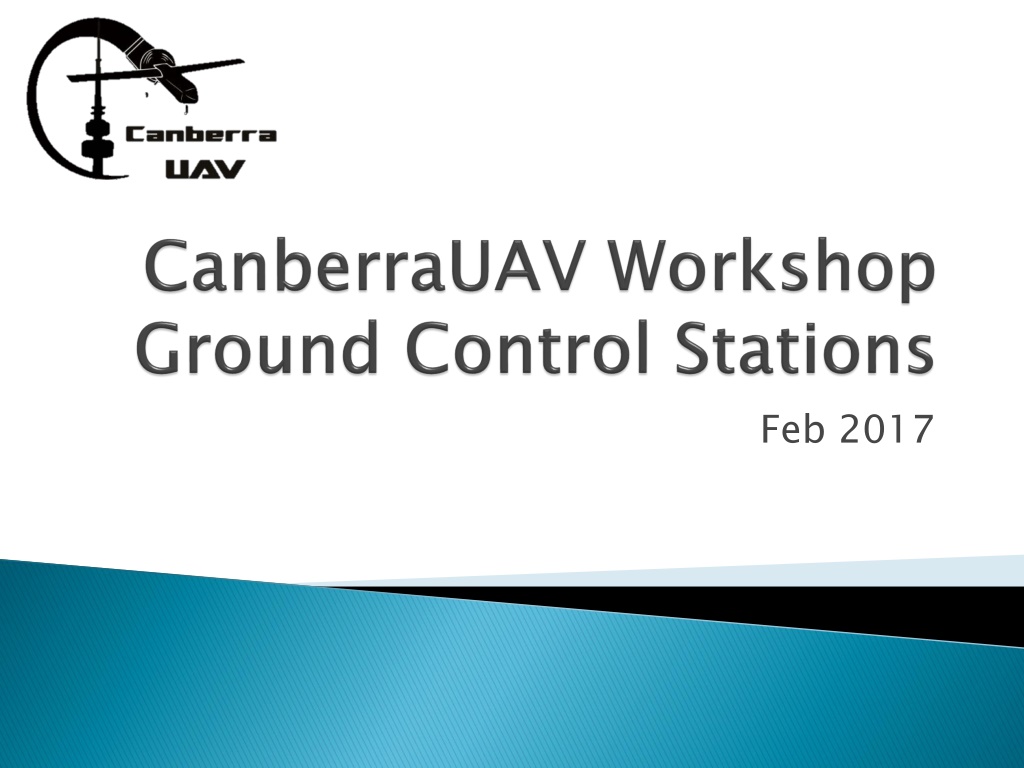
 undefined
undefined









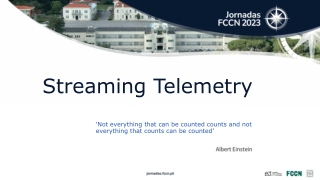

![Read⚡ebook✔[PDF] Linking the Space Shuttle and Space Stations: Early Docking Te](/thumb/21519/read-ebook-pdf-linking-the-space-shuttle-and-space-stations-early-docking-te.jpg)




